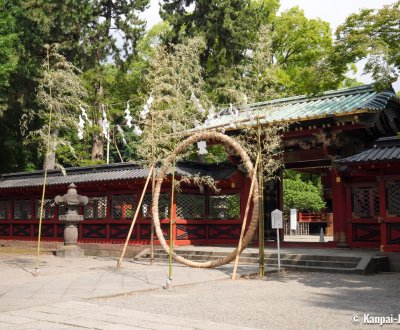Nagoshi no Harae
A Mid-year Purification Ritual
Nagoshi no Harae is a ritual carried out every year on June 30th in all Shinto shrines of Japan. Dedicated to spiritual and physical purification, it aims at freeing believers from their sins for the summer celebrations to come as they walk through chinowa grass rings and is an occasion to pray for protection against evil until the next year.
Nagoshi no Harae (or Nagoshi no Oharae) literally means "great summer purification" and takes place on June 30th in most of Japan’s Shinto shrines. The ritual is aiming at getting rid of any spiritual impurity or negative feeling, to be ready for the great celebrations to come such as the Tanabata 🎋 Star Festival in July and the "festival of the dead" Obon in August.
Another similar ceremony, Oharae ("great purification") is held on December 30 or 31 to end the year on a positive note and welcome the New Year under the best possible auspices.
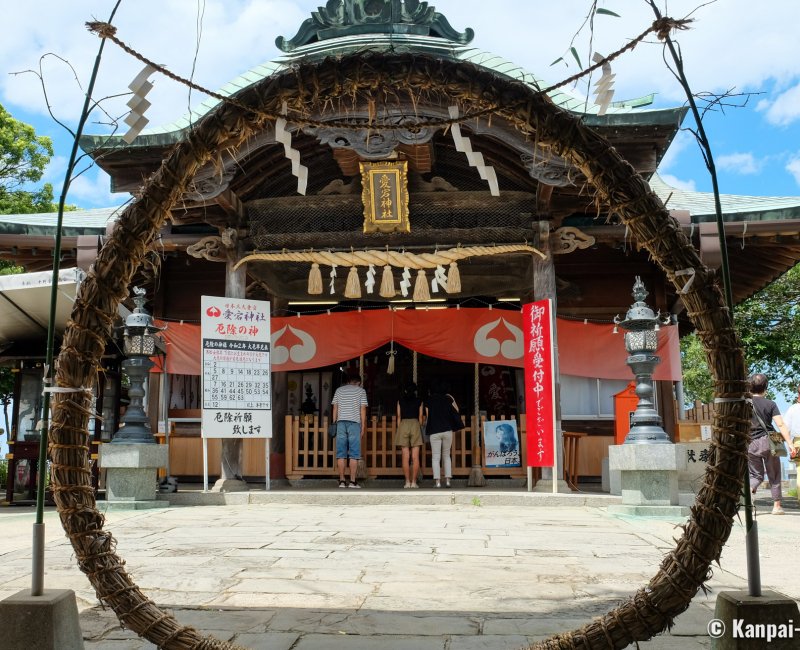
Date and origin
This custom, also called Minazuki no Harae, is opening summer, a very warm and humid season that can be hard on the body. Minazuki is the name of the 6th month in the former lunisolar koyomi calendar in use until the end of the 19th century in the archipelago. This period, lasting approximately 30 days, now takes place between late June and August, depending on the year. Traditionally, Nagoshi (or Minazuki) no Harae is held on the last day of the 6th month, which was set on June 30th for convenience. However the dates may slightly vary according to the region and the shrines.
Rites in Nagoshi no Harae seem to derive from a legend: 2 brothers, one very wealthy and the other very poor, were challenged by a god disguised as a traveler. The poorest man, named Somin Shôrai, was the only one to offer him food and shelter. As a reward for his hospitality, the god, who happened to be the kami of storms Susanoo, gifted him a woven grass ring to carry at the belt as a protection against diseases and epidemics. When the god later unleashed a plague in the area, Somin Shôrai and his offsprings were the only ones spared, thanks to the ring.
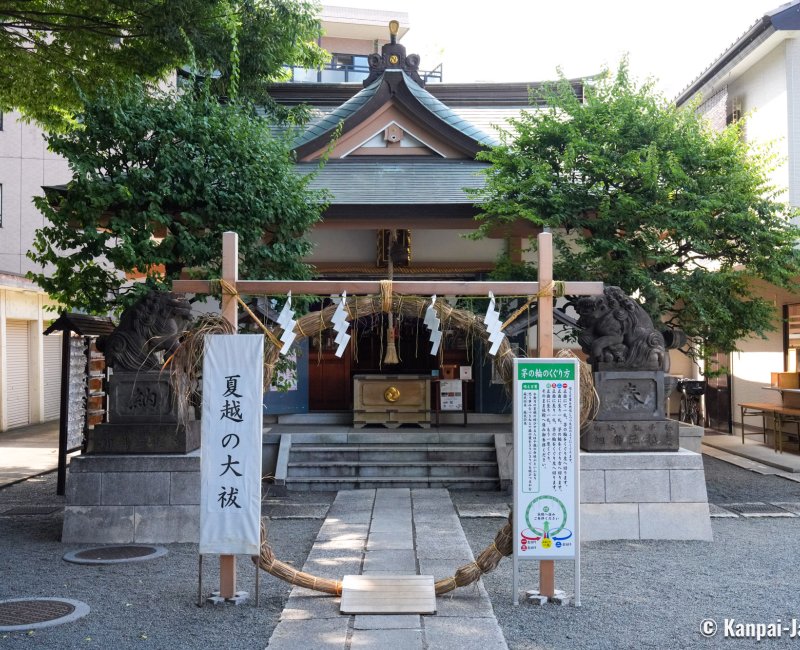
How to perform the Shinto purification ritual?
Therefore, a key component of this ritual is the chinowa, a giant ring made of cogon grass’ stems (chigaya チガヤ), ornamented with gohei paper streamers and sasa bamboo leaves. It is placed at the entrance of the shrine’s grounds and freely accessible several days before the ceremony, and large enough to allow a standing adult.
The custom consists in walking through the ring (chinowa kuguri) drawing an 8-shaped (or infinite sign) pattern, then letting a paper substitute (hitogata) imbued with physical or spiritual ailments of its owner, at the shrine to have it purified later by fire 🔥 or water.
Chinowa kuguri
Before proceeding to the chinowa kuguri, one must first go to the temizuya for ablutions, then face the vegetal ring and bow as a greeting. Then, one must make 3 circles through the ring like so:
- Go through the ring with the left foot first and circle on the same side; then,
- Go through with the right foot and turn on the right;
- Make a last circle on the left.
Finally, go straight through the ring towards the prayers pavilion. Don’t forget to bow each time you are facing the grass ring and before going through it. Instructions on how to properly perform the chinowa kuguri are generally available near the grass ring. It is sometimes required to chant a prayer or recite a waka poem themed on the situation.
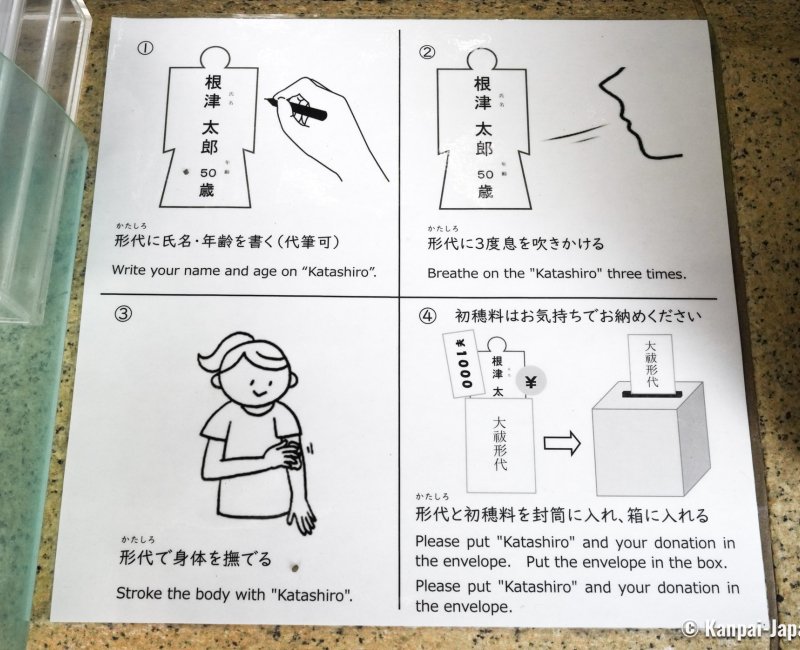
Hitokatashiro
Many shrines additionally encourage the practice of hitokatashiro (人形代), a doll substitute. The believer transfers their spiritual or physical ailments to a small paper or wood human silhouette (hitogata) by writing their name, date of birth on it, and using it to rub their body part they wish to heal or protect. This "doll" is then left at the shrine along with a money offering, to be purified, either by cremation or placed in a stream of water, thus freeing the human it is standing for from their hardships.
The great summer purification is also a good occasion to purchase an ofuda paper talisman inscribed with the name of Somin Shôrai, to place it at home so as to protect the household from diseases. Special goshuin seals are also available.
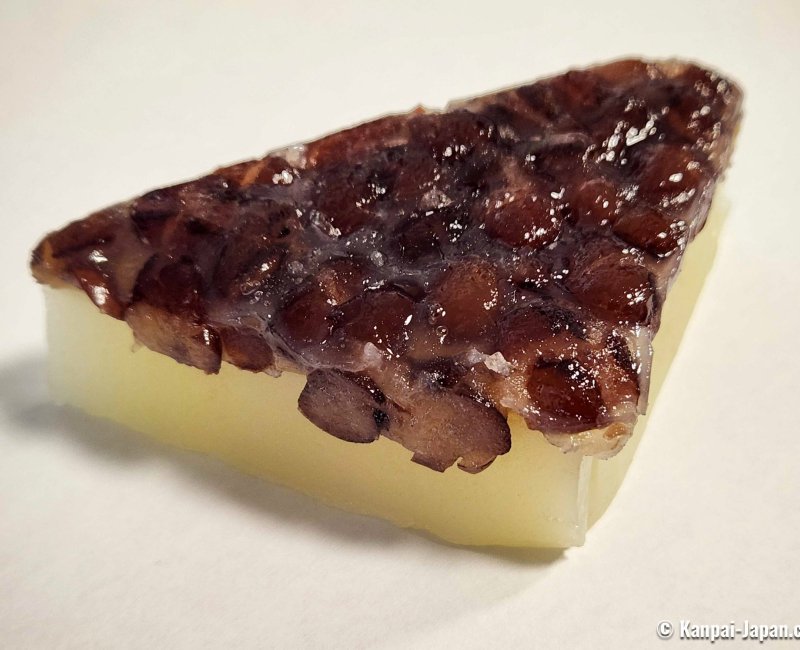
Minazuki
Like any traditional Japanese celebration, Nagoshi no Harae has its own wagashi pastry: the minazuki (水無月). This triangle-shaped pastry is made of a layer of rice cake topped with a layer of sweet azuki red beans, and steamed. The recipe may vary according to the region, with rice replaced by warabi mochi or konjac. It is sometimes served on a sasa bamboo leave.
The minazuki pastry originates from Kyoto, probably as soon as the Heian period (794 – 1185). It displays several symbolic meanings:
- The azuki beans, like the mame thrown at Setsubun, are said to protect from evil and demons;
- Its triangular shape form a half of a square, which symbolizes the half of a year;
- Its shapes also reminds of the piece of ice that the emperor used to eat during the ritual, as a way to symbolically soften the summer heat waves to come.
At the time, ice-houses were indeed the only installations whose isothermal properties allowed cold preservation all year round, but they were rare and mostly owned by the ruling classes. The general population just had to settle with the pastry. Nowadays, the rice and bean cake can be found very easily during June.
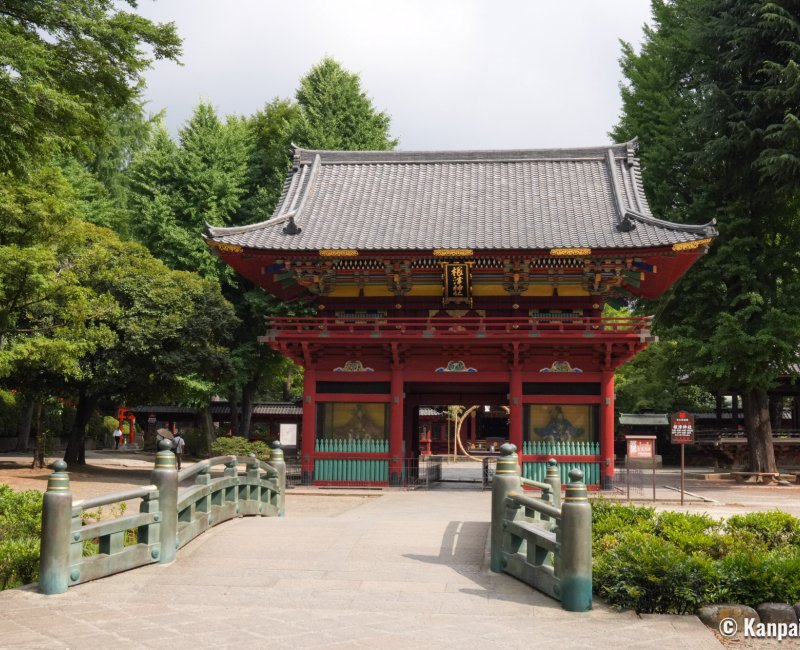
Where to celebrate Nagoshi no Harae in Japan?
The ritual is carried out at every Shinto shrines of Japan at the end of June. On the preceding days, the following popular shrines are worth a visit:
- In Tokyo: Kanda Myojin, Nezu-jinja, Asakusa Otori-jinja;
- In Kyoto: Yasui Kompira-gu, Shimogoryo-jinja at the center, Yasaka-jinja et Heian-jingu in the east, Kamigamo, Kitano Tenmangu and its 5-meters wide chinowa or Kifune-jinja in the north, Fushimi Inari Taisha or Jonan-gu in the south, etc.
- In Osaka: Sumiyoshi Taisha.
The ritual is usually held in a quiet and rather collected atmosphere, even though a few shrines do organize matsuri-style animations and fireworks 🎆, but it is not the norm. Moreover, the custom is keeping up with the times and modernizing: a few shrines, such as Kanda Myojin, set up a streaming session of the Nagoshi no harae for those who cannot attend in person, and it is possible to send the hitogata paper silhouette by mail.

